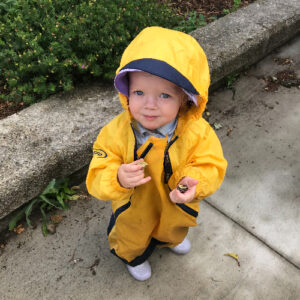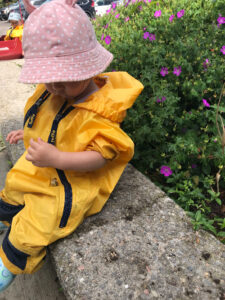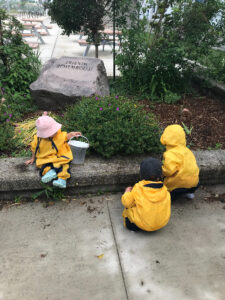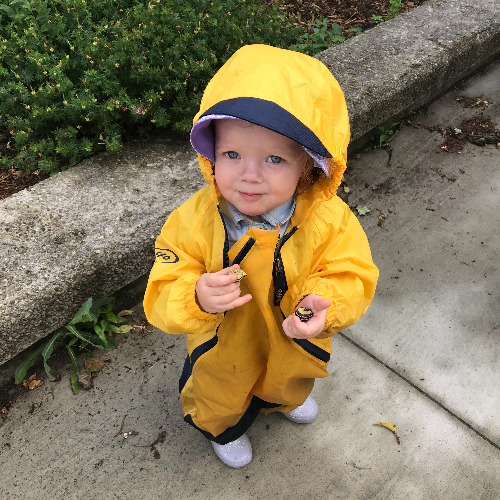On Monday June 21, the infant group went outside to explore the environment. While on a walk, the children stopped by the garden beds and looked at all the different coloured flowers. The children then noticed that there were snails in the garden. The children wanted to see the snails up close, and one child gently picked one up and placed it onto their palm. The children were trying to look inside the shell to see what was in there. Some of the children quietly observed the snails, others expressed vocal sounds and looked to the educators for their responses. Not everyone was keen on holding the snails, and those who did not want to touch them were still interested in observing the creature from afar.


As the children examined the snail, they were able to participate in shared exploration, play and learning with adults (educators) and their peers (HDLH, 2014, pg. 26).
The longer the children looked at the snails, the more connections were being made both verbally and non-verbally between the community and natural environments (HDLH, 2014, pg. 26).
The children engaged their sense of wonder by expressing joy in their encounters with the natural world. The children participated at their own leisure the best to their abilities in an inclusive learning environment.
What’s next? 
The educators will continue to encourage children to explore nature and their environment by taking the children on community walks and to the forest. This will give the children the opportunity to observe new things and to also see what else is around them in their day to day life.

